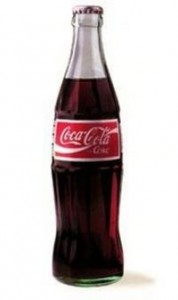Your branded package design needs to communicate to shoppers instantly and convince them within a couple of seconds to choose your package, brand, and product rather than any of the others on the shelf. That's a tall order, but creative package design can help drive brand success. In Part 1 of my new series, Package Design for Brand Success, you'll learn how to create packages that help build your business.

First, you need to understand how packaging affects consumers and sales success. You can't develop a great package design if you don't know why packaging is so important. There are three primary areas where package design plays a significant role in business success -- visual, rational, and emotional perceptions that affect consumer purchase behaviors. Let's take a look at each area in more detail.
Visual Response to Package Design
According to operative communications hierarchy theory, people consume and are affected by the elements of package design in the following order: colors, shapes, symbols, and words. When a consumer is faced with a cluttered shelf of brands and products, they process color first and words last. They don't see individual messages printed on those packages. Instead, they see a wall of colors, and colors that stand out from the clutter are the ones that get noticed.
Shapes and symbols can also be used to effectively capture attention and boost recall and recognition. For example, an oddly shaped water bottle package design placed on the same shelves as traditional water bottles is likely to be noticed. Similarly, a recognizable symbol can draw consumers' eyes. That symbol could be a logo or a third-party symbol such as the Good Housekeeping Seal or Energy Star Seal.
All visual stimuli in package design can affect consumers' perceptions of the brand and product. Color, shape, and symbols (as well as words) help to define the brand persona, which is a core component of long-term success.
Rational Response to Package Design
Consumers' rational responses to package design are based on the messages the packaging communicates to them and how believable that messaging is. Fewer, focused messages meant for a specific target audience are far more powerful in package design than cluttered lists of broad messages intended to appeal to as many people as possible.
With that in mind, straight-forward messages that truly differentiate the brand and product from all of the other options on the shelf are critical. A "me-too" brand won't win at the shelf.
Emotional Response to Package Design
The way a package design makes consumers feel is one of the most important aspects of developing packaging that helps to boost brand awareness, recall, and loyalty. Packaging that simply lists the features of the product inside are less useful to consumers than packaging that communicates the added value (i.e., emotional value) that the product and brand delivers.
Packaging affects consumer perceptions for a brand, and consumers' emotional responses to your packaging play an important role in forming those perceptions. From the colors you use to the shapes, symbols, and words you use, package design can evoke a wide variety of feelings. You need to make sure that your packaging is eliciting the right emotional responses to position your brand for long-term success.

There is a reason why Coca-Cola still makes its glass bottle design. That packaging evokes powerful feelings of nostalgia and a perception that the product tastes better in the glass packaging. Similarly, white is typically associated with feelings of cleanliness and purity. That's why most soaps and cleaning products use the color white in their package designs. Brown soap simply wouldn't elicit the right feelings or perceptions for a soap brand and product.
Of course, consumer feelings and perceptions are constantly evolving, so your package design will need to change to continually meet consumer expectations and help you win at the shelf level. Take a look at the history of Microsoft operating system packaging from TechRadar to see how packaging evolves over time, and imagine how antiquated the original Microsoft packaging would seem if it were still used today. You can bet Microsoft sales would suffer.
Stay tuned for Part 2 of the Package Design for Brand Success Series, which will discuss the types of package design that you need to consider before you create your brand and product packaging.
Image: Gabriela González, Coca-Cola


.jpeg)

.jpg)

















